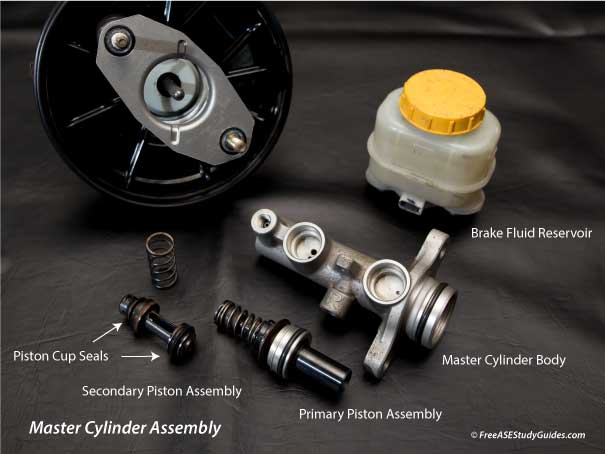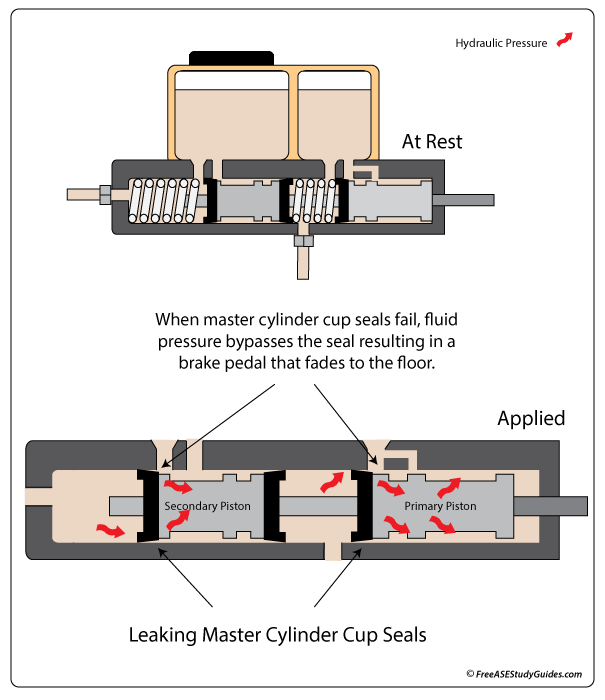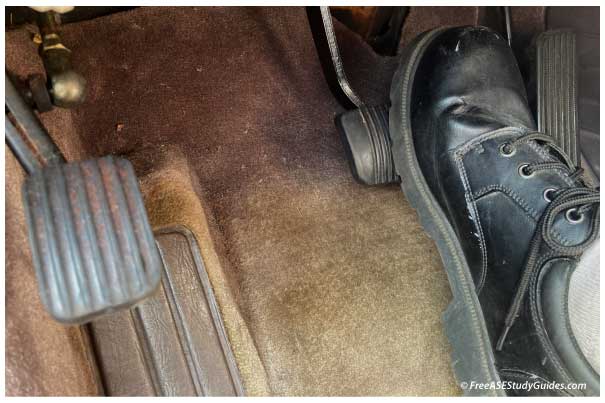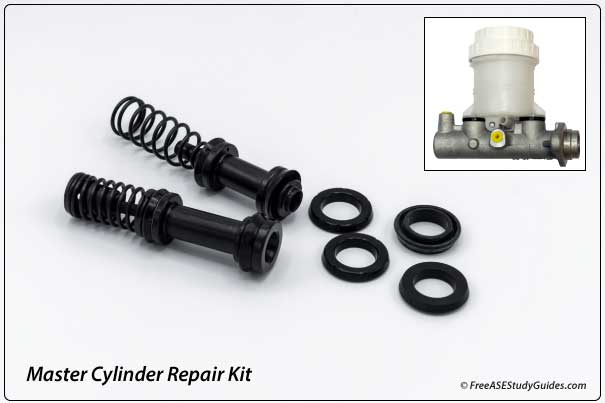Leaking Master Cylinder Cup Seals

Today's master cylinders have two pistons that work in tandem to apply pressure to the braking system. These pistons have cup seals to seal fluid in the pressure chamber. When the brakes are at rest, the lip/cup seals rest between the vent and replenishing ports.

When the brake pedal is depressed, the forward seal passes the port, creating hydraulic pressure that moves the pistons in the brake wheel cylinders and brake calipers. Unfortunately, when these seals wear, or contaminated fluid causes them to become soft and mushy, the master cylinder leaks internally. As a result, the brake pedal will fade to the floor as fluid pressure bypasses the seal. This pressure loss in the brake system can cause the vehicle to creep forward in gear.
Master Cylinder Leak Test

The system may have an external leak. Check the master cylinder's reservoir, but remember it may be low from brake pad wear or a hydraulic fluid leak in the system. External leaks appear as wet spots on the brake lines, fittings, and calipers. A small external leak behind the master cylinder can leak into the brake booster. Unbolt and look behind the master cylinder for a leaking seal.

Check the internal seals by blocking the ports to the brake lines with pressure-resistant plugs. It's simple; if the brake pedal fades to the floor with the ports plugged off, the master cylinder cup seals are leaking. Conversely, a firm pedal indicates that the master cylinder is not leaking and that there is a leak or problem somewhere else in the system.
Master Cylinder Repair

Master cylinders are either replaced or repaired with a master cylinder repair kit. Check with the manufacturer before proceeding; honing can remove special coatings, resulting in premature internal leakage. It may be safer to replace an aluminum master cylinder with a new or remanufactured one.